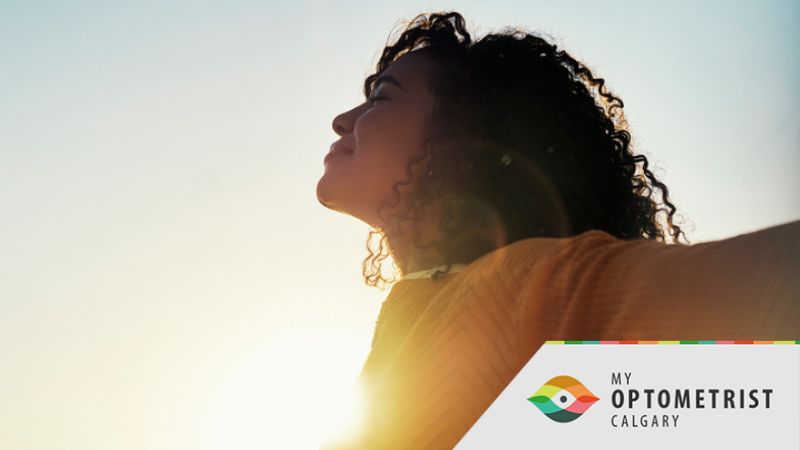
In our fast-paced, technology-driven world, the prevalence of myopia, or nearsightedness, has skyrocketed, raising concerns about the long-term effects on our vision. However, recent research has uncovered a surprisingly simple solution to this growing problem: spending more time outdoors. In this blog post, we will delve into the fascinating relationship between outdoor activities and the reduction of myopia risk, shedding light on how embracing the great outdoors can promote healthier vision and protect our eyes from this increasingly common condition.
Understanding Myopia
Myopia is a refractive error that causes distant objects to appear blurry, while close-up objects remain clear. It occurs when the eyeball is too elongated or the cornea is excessively curved, leading to light rays focusing in front of the retina rather than directly on it. Factors such as genetics, excessive near work (reading, computer use), and a lack of outdoor activities have been associated with the development and progression of myopia.
The Role of Outdoor Time
Several studies have suggested a correlation between spending time outdoors and a reduced risk of myopia. Researchers have discovered that spending more time outdoors during childhood can have a protective effect against the development and progression of myopia. One hypothesis is that outdoor activities expose the eyes to natural light, which is believed to play a vital role in regulating eye growth and the development of the visual system.
Sunlight and Vitamin D
Sunlight exposure has been linked to the production of vitamin D, a hormone that plays a crucial role in bone health and immune function. Recent evidence suggests that vitamin D may also influence eye health. Some studies have found a positive association between vitamin D levels and a reduced risk of myopia. While the exact mechanisms are still being explored, it is believed that vitamin D's anti-inflammatory properties and its role in maintaining proper eye structure and function contribute to this protective effect.
Accommodative Response and Outdoor Activities
Another theory suggests that engaging in outdoor activities requires the eyes to focus on objects at varying distances, stimulating the accommodative response. This constant adjustment of focus may help prevent or slow down the progression of myopia. Indoor activities, on the other hand, often involve prolonged near work, such as reading or using electronic devices, which can strain the eyes and contribute to myopia development.
Reduced Near Work and Increased Outdoor Time
One of the primary risk factors for myopia development is excessive near work, such as reading or prolonged use of electronic devices. Spending extended periods engaged in such activities demands sustained focusing at close distances, increasing the risk of myopia. By encouraging children and adults to spend more time outdoors, we can reduce the overall duration of near work and provide relief to the eyes. This balanced approach can help mitigate the risk of myopia and promote healthier vision.
True Or False? The Facts About Myopia.
Get Outside To Prevent Myopia
Myopia has become a prevalent issue affecting individuals worldwide, especially in younger populations. The good news is that we have evidence suggesting that spending time outdoors can play a significant role in reducing the risk of myopia. By exposing our eyes to natural light, engaging in activities at varying distances, and reducing the time spent on near work, we can take proactive steps towards maintaining healthy vision. It's important to remember that spending time outdoors alone may not be a complete solution. Regular eye exams, proper lighting conditions during near work, and adopting healthy visual habits are essential components of maintaining good eye health. So, let's embrace the outdoors, strike a balance between near and far activities, and protect our eyes for a brighter, clearer future.
Early diagnosis and myopia management are critical to maintaining vision and eye health. We use state-of-the-art equipment for assessments and treatment, and prioritize patient education. To book an eye exam with one of our eye doctors, contact My Optometrist at one of our three locations at Health First in SE Calgary, Sunridge in NE Calgary, or Three Hills, AB. You can also call us or fill out the online contact form.
FAQ
Q: Does myopia worsen with age?
A: It can. Because myopia is the eye growing too long, it depends whether the eye keeps growing or if it stops. If the eye grows longer, the myopia gets worse.
Q: Can myopia lead to blindness?
A: In general myopia does not cause blindness, however, there is a rare type of myopia called degenerative myopia that can lead to eventual blindness. This type of myopia typically only presents in about 2% of the population.
Q: How do I know if my child has myopia?
A: You might notice your child getting quite close when they need to see something. The only way to know for sure is to take them for a vision assessment. You can schedule an eye exam with My Optometrist by filling out the contact form or by calling one of our locations: Sunridge in the NE, Sundance in the SE, or Three Hills AB.